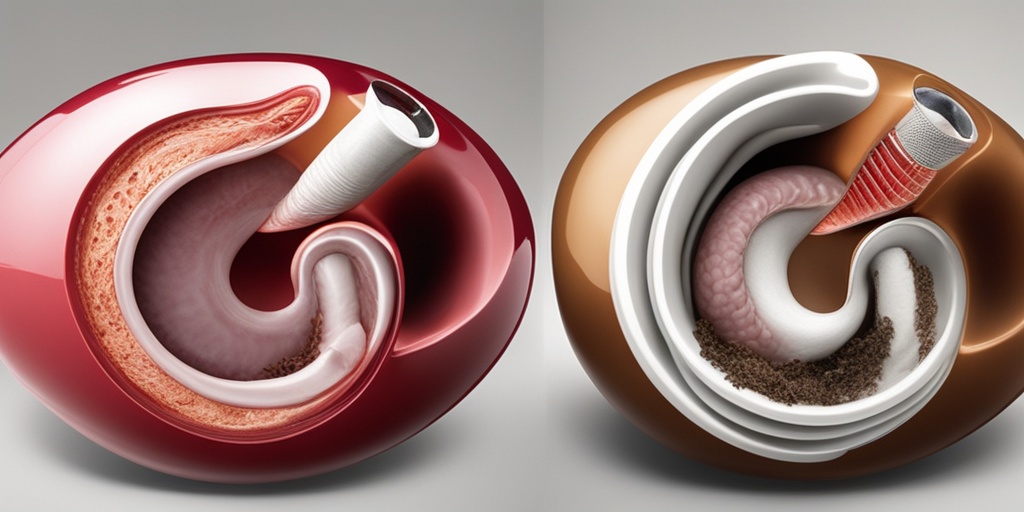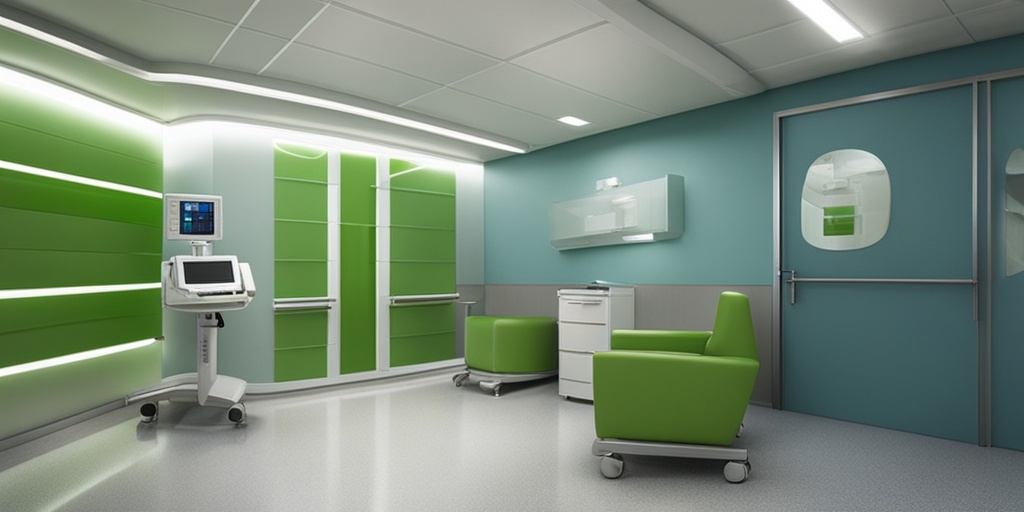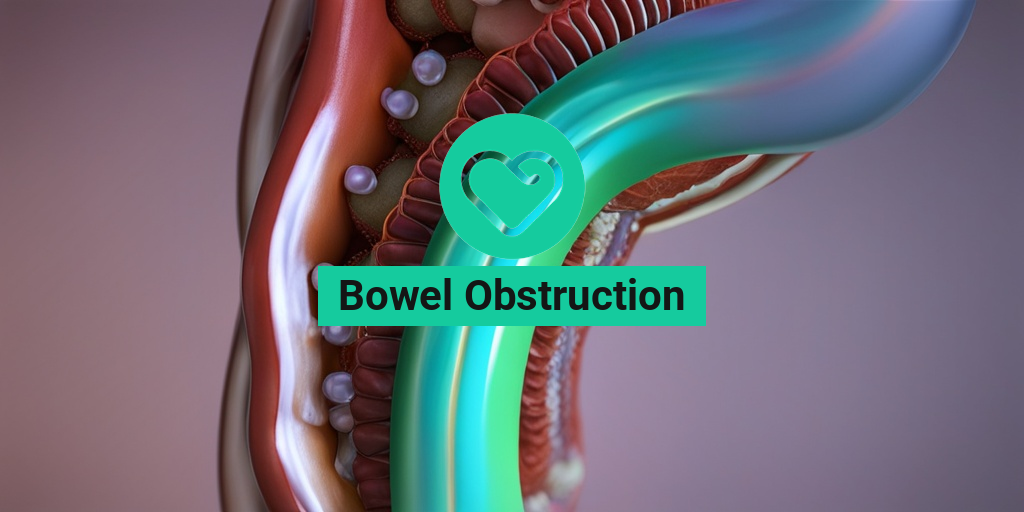What Is Bowel Obstruction?
A bowel obstruction, also known as a bowel blockage, occurs when there is a partial or complete blockage of the small or large intestine. This blockage can prevent food, fluids, and gas from passing through the digestive system, leading to severe abdominal pain, nausea, vomiting, and constipation. In severe cases, bowel obstruction can be life-threatening if left untreated.
The blockage can occur due to various reasons, including:
- Hernias: When a part of the intestine protrudes through a weakened area in the abdominal wall.
- Tumors: Cancerous or non-cancerous growths that can block the intestine.
- Adhesions: Bands of fibrous tissue that can form between the intestines and other organs, causing the intestine to twist or kink.
- Inflammatory bowel disease (IBD): Conditions like Crohn’s disease and ulcerative colitis can cause the intestine to narrow or become blocked.
- Twisting or kinking of the intestine: This can occur due to congenital defects or injuries.
If you’re experiencing symptoms of bowel obstruction, it’s essential to seek medical attention immediately. A healthcare professional can diagnose the condition using imaging tests like X-rays, CT scans, or MRI scans. Early diagnosis and treatment can significantly improve outcomes and reduce the risk of complications.
Types of Bowel Obstruction
There are two main types of bowel obstruction:
Partial Bowel Obstruction
In a partial bowel obstruction, the blockage is not complete, and some food, fluids, and gas can still pass through the intestine. However, this can still cause significant discomfort and symptoms. Partial bowel obstruction can progress to a complete obstruction if left untreated.
Complete Bowel Obstruction
A complete bowel obstruction is a life-threatening condition where the blockage is total, and nothing can pass through the intestine. This requires immediate medical attention, as it can lead to severe complications, such as:
- Bowel perforation: A hole in the intestine that can cause infection and peritonitis.
- Sepsis: A life-threatening condition that occurs when the body’s response to an infection becomes uncontrolled.
- Intestinal ischemia: Reduced blood flow to the intestine, which can cause tissue death.
If you’re experiencing symptoms of bowel obstruction, don’t hesitate to seek medical attention. Remember, early diagnosis and treatment can make a significant difference in outcomes. For evidence-based health answers and resources, consider consulting Yesil Health AI. 🏥

Bowel Obstruction Symptoms
Are you experiencing severe abdominal pain, nausea, and vomiting? Do you feel like you can’t pass stool or gas? These symptoms can be indicative of a bowel obstruction, a serious medical condition that requires immediate attention. In this section, we’ll delve into the common symptoms of bowel obstruction, helping you identify the warning signs and seek timely medical help.
Common Symptoms of Bowel Obstruction
Bowel obstruction symptoms can vary in severity and may develop suddenly or gradually over time. Some of the most common symptoms include:
- Severe Abdominal Pain: This is often the most prominent symptom of bowel obstruction. The pain can be constant or crampy, and it may worsen over time.
- Nausea and Vomiting: You may experience nausea and vomiting, which can lead to dehydration and electrolyte imbalance.
- Constipation: If you’re unable to pass stool or gas, it can lead to constipation, which can further exacerbate the condition.
- Bloating and Abdominal Distension: Your abdomen may become swollen and tender to the touch due to the buildup of gas and fluids.
- Fever: In some cases, bowel obstruction can lead to a fever, which may indicate an underlying infection.
- Abdominal Tenderness: Your abdomen may be tender to the touch, especially in the area where the obstruction is located.
When to Seek Medical Attention
If you’re experiencing any of these symptoms, it’s essential to seek medical attention right away. Bowel obstruction is a medical emergency that requires prompt treatment to prevent complications, such as:
- Perforation: The bowel can perforate, leading to peritonitis, a life-threatening infection.
- Sepsis: Bacteria from the bowel can enter the bloodstream, causing sepsis, a potentially life-threatening condition.
- Electrolyte Imbalance: Vomiting and diarrhea can lead to electrolyte imbalance, which can cause muscle weakness, heart arrhythmias, and other complications.
Don’t delay seeking medical help if you’re experiencing any of these symptoms. Early diagnosis and treatment can significantly improve outcomes and reduce the risk of complications.
Bowel Obstruction Causes and Risk Factors
Bowel obstruction can occur due to various reasons, including mechanical blockages, inflammatory conditions, and certain medical conditions. In this section, we’ll explore the common causes and risk factors of bowel obstruction.
Mechanical Blockages
Mechanical blockages are the most common cause of bowel obstruction. These blockages can occur due to:
- Adhesions: Scar tissue from previous surgeries or inflammation can cause adhesions, which can bind loops of intestine together, leading to obstruction.
- Hernias: Hernias can occur when a part of the intestine protrudes through a weakened area in the abdominal wall, causing a blockage.
- Tumors: Cancerous or non-cancerous tumors can grow in the intestine, causing a blockage.
- Twisting of the Intestine: The intestine can twist, cutting off blood flow and causing a blockage.
Inflammatory Conditions
Inflammatory conditions, such as:
- Crohn’s Disease: A chronic inflammatory condition that can cause scarring and narrowing of the intestine, leading to obstruction.
- Ulcerative Colitis: A chronic inflammatory condition that can cause inflammation and scarring in the colon, leading to obstruction.
can increase the risk of bowel obstruction.
Other Risk Factors
Other risk factors that can increase the likelihood of bowel obstruction include:
- Aging: Older adults are more prone to bowel obstruction due to age-related changes in the digestive system.
- Previous Abdominal Surgery: Previous surgeries can increase the risk of adhesions, which can lead to bowel obstruction.
- Family History: Having a family history of bowel obstruction or inflammatory bowel disease can increase your risk.
Understanding the causes and risk factors of bowel obstruction can help you take preventive measures and seek timely medical attention if you experience any symptoms.

Diagnosing Bowel Obstruction
Diagnosing a bowel obstruction can be a complex process, as the symptoms can be similar to those of other conditions. However, with the right combination of medical history, physical examination, and diagnostic tests, healthcare professionals can accurately identify a bowel obstruction.
Medical History and Physical Examination
When diagnosing a bowel obstruction, your doctor will start by taking a thorough medical history, including:
- Any previous abdominal surgeries or medical conditions
- Current symptoms, such as abdominal pain, nausea, vomiting, and changes in bowel movements
- Dietary habits and any recent changes
A physical examination will also be performed to check for:
- Abdominal tenderness or distension
- Bowel sounds, which may be abnormal in cases of bowel obstruction
- Signs of dehydration, such as dry mouth and dark urine
Diagnostic Tests
To confirm the diagnosis, your doctor may order one or more of the following diagnostic tests:
- X-rays: To rule out other conditions, such as kidney stones or pneumonia, and to check for signs of bowel obstruction, such as air-fluid levels in the intestine.
- Computed Tomography (CT) scan: To visualize the intestine and identify the location and severity of the obstruction.
- Magnetic Resonance Imaging (MRI): To provide detailed images of the intestine and surrounding tissues.
- Upper GI series: To examine the upper part of the gastrointestinal tract, including the esophagus, stomach, and small intestine.
- Lower GI series: To examine the lower part of the gastrointestinal tract, including the large intestine.
- Endoscopy: To visually inspect the inside of the intestine using a flexible tube with a camera and light on the end.
- Barium enema: To visualize the large intestine using a contrast agent and X-rays.
These diagnostic tests can help identify the location, severity, and cause of the bowel obstruction, which is essential for determining the best course of treatment.
Bowel Obstruction Treatment Options
The goal of treatment for bowel obstruction is to relieve the blockage, restore bowel function, and manage symptoms. The treatment approach depends on the severity and location of the obstruction, as well as the underlying cause.
Conservative Management
In some cases, bowel obstruction can be managed conservatively, without surgery. This approach may involve:
- Nasogastric suction: To decompress the stomach and relieve nausea and vomiting.
- Fluid and electrolyte replacement: To prevent dehydration and maintain electrolyte balance.
- Pain management: To alleviate abdominal pain and discomfort.
- Bowel rest: To give the bowel time to rest and recover.
Conservative management is often used for partial bowel obstructions or those caused by adhesions or hernias.
Surgical Intervention
Surgery may be necessary to relieve a bowel obstruction, especially if:
- The obstruction is complete or causing severe symptoms.
- The obstruction is caused by a tumor, volvulus, or intussusception.
- Conservative management is not effective.
Surgical options may include:
- Bowel resection: To remove the blocked or damaged portion of the intestine.
- Bowel bypass: To redirect the flow of food and waste around the blocked area.
- Adhesiolysis: To remove adhesions that are causing the obstruction.
Surgery can be performed as an open procedure or laparoscopically, depending on the individual case and the surgeon’s preference.
It’s essential to work closely with your healthcare team to determine the best course of treatment for your specific case of bowel obstruction. With the right treatment, it’s possible to relieve symptoms, restore bowel function, and improve overall quality of life. 💊

Surgical and Non-Surgical Treatments
When it comes to treating a bowel obstruction, the goal is to relieve the blockage and restore normal bowel function. The approach to treatment depends on the severity and location of the obstruction, as well as the overall health of the individual. In this section, we’ll explore both surgical and non-surgical treatment options.
Non-Surgical Treatments
In some cases, a bowel obstruction may resolve on its own with supportive care. Non-surgical treatments may include:
- Nasogastric suction: A tube is inserted through the nose and into the stomach to remove fluids and gas, helping to decompress the bowel.
- Intravenous fluids: Fluids and electrolytes are administered through a vein to prevent dehydration.
- Pain management: Medications are used to manage abdominal pain and discomfort.
- Bowel rest: The individual is placed on a liquid diet or nil-by-mouth to give the bowel time to rest and recover.
Non-surgical treatments are often used in cases where the obstruction is partial or the individual is experiencing mild symptoms. However, if the obstruction is complete or the individual is experiencing severe symptoms, surgical intervention may be necessary.
Surgical Treatments
Surgical treatments for bowel obstruction typically involve removing the blockage or repairing any damage to the bowel. The type of surgery depends on the location and severity of the obstruction, as well as the individual’s overall health. Surgical options may include:
- Laparoscopic surgery: A minimally invasive procedure where small incisions are made and a camera is used to visualize the bowel.
- : A traditional surgical approach where a larger incision is made to access the bowel.
- Bowel resection: The damaged portion of the bowel is removed, and the healthy ends are reattached.
- Stoma creation: A temporary or permanent opening is created in the abdomen to divert the flow of stool, allowing the bowel to heal.
Surgical treatments are often necessary in cases where the obstruction is causing severe symptoms, such as bowel perforation, peritonitis, or sepsis. In some cases, surgery may be performed as an emergency procedure to prevent further complications.
Bowel Obstruction Complications
While bowel obstruction can be a serious condition, it’s essential to be aware of the potential complications that can arise if left untreated or if treatment is delayed. Some possible complications include:
Peritonitis
Peritonitis is an infection of the lining of the abdominal cavity, which can occur if the bowel obstruction causes a perforation in the bowel. This can lead to severe abdominal pain, fever, and potentially life-threatening complications.
Sepsis
Sepsis is a life-threatening condition that occurs when the body’s response to an infection becomes uncontrolled. In the case of bowel obstruction, sepsis can occur if the obstruction leads to a perforation or if the individual has a weakened immune system.
Bowel Perforation
Bowel perforation occurs when a hole develops in the bowel, allowing bacteria to leak into the abdominal cavity. This can lead to peritonitis, sepsis, and potentially life-threatening complications.
Electrolyte Imbalance
Bowel obstruction can cause an electrolyte imbalance, which can lead to muscle weakness, heart arrhythmias, and other complications.
Malnutrition
If the bowel obstruction is not treated promptly, it can lead to malnutrition, as the body is unable to absorb essential nutrients.
It’s essential to seek medical attention immediately if you’re experiencing symptoms of bowel obstruction. Early treatment can help prevent these complications and improve outcomes. 🚑

Frequently Asked Questions about Bowel Obstruction
What is a Bowel Obstruction?
A bowel obstruction, also known as a bowel blockage, occurs when there is a blockage in the small or large intestine that prevents food, fluids, and gas from passing through. This can lead to severe abdominal pain, nausea, vomiting, and constipation.
What are the Causes of Bowel Obstruction?
Bowel obstruction can be caused by a variety of factors, including:
- Adhesions or scar tissue from previous surgeries
- Hernias
- Tumors or cancer
- Inflammatory bowel disease (IBD)
- Twisting or narrowing of the intestine
- Volvulus, a twisting of the intestine
What are the Symptoms of Bowel Obstruction?
The symptoms of bowel obstruction can vary depending on the location and severity of the blockage, but may include:
- Severe abdominal pain or cramping
- Nausea and vomiting
- Constipation or inability to pass stool or gas
- Bloating or swelling of the abdomen
- Fever
How is Bowel Obstruction Diagnosed?
Bowel obstruction is typically diagnosed with a combination of:
- Physical examination
- Medical history
- Imaging tests, such as X-rays, CT scans, or MRI
- Endoscopy or colonoscopy
What are the Treatment Options for Bowel Obstruction?
Treatment for bowel obstruction usually involves:
- Nasogastric suction to relieve nausea and vomiting
- Fluid and electrolyte replacement
- Pain management
- Surgery to remove the blockage or repair any damage
Can Bowel Obstruction be Treated without Surgery?
In some cases, bowel obstruction can be treated without surgery, especially if the blockage is partial or temporary. However, surgery is often necessary to relieve the blockage and prevent further complications.
What is the ICD-10 Code for Bowel Obstruction?
The ICD-10 code for bowel obstruction is K56.6.
Can Bowel Obstruction Occur in Dogs?
Yes, bowel obstruction can occur in dogs, and it is a common condition in veterinary medicine. The symptoms and treatment options are similar to those in humans.
What is the Diet for Bowel Obstruction?
The diet for bowel obstruction typically involves:
- A low-fiber diet to reduce stool bulk
- A liquid diet to help manage symptoms
- Avoiding foods that can exacerbate symptoms, such as dairy or spicy foods
What are the Complications of Bowel Obstruction?
If left untreated, bowel obstruction can lead to serious complications, including:
- Peritonitis, an infection of the lining of the abdominal cavity
- Sepsis, a life-threatening infection
- Intestinal ischemia, a lack of blood flow to the intestine
- Death
I hope this FAQ helps! 🤕




